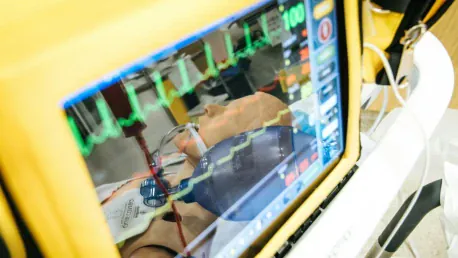In an alarming development for the healthcare industry, the FDA reported a string of medical device recalls in February due to a variety of malfunctions and risks, raising serious concerns over patient safety. These recalls encompass a range of issues from minor corrections to the complete market withdrawal of certain products. Categorized by severity, the recalls span from Class III, which are the least severe, to Class I, which represent the utmost risk of serious injury or death. This latest round of recalls underscores the critical need for stringent quality control and ongoing monitoring of medical devices to ensure they do not inadvertently endanger the people they are designed to help.
Varipulse Ablation Catheter and Medline Arterial Catheters
Among the most urgent recalls reported was for the Varipulse ablation catheter, which caused strokes or mini-strokes in four patients, leading to a temporary halt in U.S. sales. Although sales resumed after the release of updated instructions, this incident underscores the severe risks associated with device malfunctions. The ability for a device intended for therapeutic purposes to become a health hazard speaks volumes about the necessity for rigorous pre-market testing and post-market surveillance to identify and mitigate potential risks as rapidly as possible.
Medline Industries also had to recall its integrated arterial catheters because of the risk that excess material could detach and enter patients’ bloodstreams. While there were no reported injuries, the potential for such serious complications prompted immediate action. This type of proactive response is crucial in ensuring patient safety by preventing adverse effects before they can manifest. The Medline recall demonstrates a conscientious approach to patient care, showing the importance of addressing even potential risks to avoid severe consequences.
Sentec/Percussionaire and Baxter Healthcare Recalls
Sentec/Percussionaire’s VDR4 Phasitron breathing circuits presented another critical issue when they malfunctioned, disrupting the ventilation process. Malfunctions in devices intended to assist breathing can have dire consequences, making this an essential recall. Despite no reported injuries or deaths, the mere possibility of such outcomes justified significant measures to correct the problem. Sentec/Percussionaire’s swift action reflects the high stakes involved in the medical device sector, where patient lives often hang in the balance.
Similarly, Baxter Healthcare Corporation recalled its Life2000 ventilator systems due to a defect in the battery charger. The defect had the potential to disrupt ventilator functionality, which is vital for patients who depend on these systems for respiratory support. Once again, the recall was issued even though there were no associated injuries or deaths. This illustrates the industry’s vigilance in promptly addressing defects that could compromise patient health, reinforcing the message that medical device safety cannot be taken lightly. Each prompt action taken emphasizes the critical role of continuous monitoring and immediate response in upholding healthcare standards.
Olympus Endoscope Instrument and Abiomed Heart Pumps
In another significant recall, Olympus retracted several models of its endoscope instruments after the tip of the guide sheath was reported to fall off during use. This defect resulted in 26 injuries, though thankfully no fatalities. Olympus’s response to recall the affected models shows a commitment to patient safety, even after injuries have occurred. The recall serves as a stark reminder of the unforeseen complications that can arise from seemingly minor defects in medical equipment and the imperative for manufacturers to swiftly act upon any reported issues.
Furthermore, issues were discovered with Abiomed heart pumps, specifically pertaining to the guidewires, which had the potential to cause the pumps to pause or stop functioning. This flaw could pose a critical threat to patients relying on these pumps for cardiac support. The proactive recall of these devices indicated a mindful approach to preventing life-threatening situations. The Abiomed recall is another example of the importance of preemptive measures in medical device management, focusing not only on rectifying existing problems but also on preventing future occurrences.
Additional Recalls and Proactive Measures
Other recalls involved newborn kits containing faulty resuscitator devices from ROi and oxygen concentrators from Jiangsu Jumao X-Care Medical Equipment, which were reported to melt and catch fire. The newborn kits’ recall followed the discovery of their inability to function properly in emergency situations. Similarly, the oxygen concentrators posed severe fire hazards, necessitating their immediate market withdrawal. Although no injuries or deaths were reported in these cases, the reactive approach to these potential dangers prevented more serious outcomes.
Moreover, Philips issued advisories on the correct positioning of mattresses on patient tables to prevent possible falls, while Max Mobility halted the use of a specific SpeedControl dial on SmartDrive power assist devices due to the risk of circuit board malfunctions causing uncontrolled movement. Medtronic also alerted the market to potential risks involving cracks and leaks in their pressure monitoring devices, which had already led to infections and injuries. Nonetheless, no fatalities were associated with these issues, showcasing that prompt interventions often mitigate risk before reaching an irreversible point.
Looking Forward
In a concerning turn of events for the healthcare sector, the FDA disclosed a number of medical device recalls in February due to multiple malfunctions and associated risks, amplifying worries about patient safety. These recalls involve a variety of issues, ranging from minor adjustments to the full market withdrawal of certain devices. They are classified into different levels of severity: Class III, the least serious, to Class I, which poses the highest risk of serious injury or death. This recent series of recalls highlights the essential need for rigorous quality control and continuous oversight of medical devices to ensure they do not unintentionally harm the patients they are meant to assist. The incident serves as a critical reminder of the importance of stringent regulatory measures and vigilant post-market surveillance to maintain the integrity and safety of medical technology in safeguarding public health.









